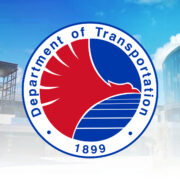Saving the Makati subway

The P200-billion Makati City subway project was hatched in 2018 and, despite being sidelined by the COVID-19 pandemic, was targeted for partial operation this year. However, a Supreme Court decision in 2022 transferred jurisdiction over 10 “Embo” (enlisted men’s barrios) in Makati to Taguig City, affecting the alignment of the 11-kilometer subway.
The project is “no longer economically and operationally feasible,” according to its contractor, Philippine Infradev Holdings Inc., as it announced last week that arbitration proceedings have been initiated at the Singapore International Arbitration Center regarding its joint venture agreement with the Makati City government. Indeed, proceeding with the subway project with a shorter length would not be financially viable because the daily passenger volume would be smaller.
However, although a case has been brought to the arbitration court, it is in the government’s best interest not to scuttle the project. There are benefits to be gained in proceeding with the Makati subway, foremost of which is that it will address the acute lack of mass transport in the highly congested central business districts (CBD) of Makati and Taguig cities where horrendous traffic is an everyday headache.
The subway will substantially ease travel for tens of thousands of commuters in the busy business enclaves of Makati and Taguig since it was designed to serve about 700,000 commuters a day.
Daytime population
A schematic diagram of the semi-loop subway line shows a terminal at the Ayala Avenue-Edsa intersection, thus connecting it to the MRT 3 line. From there, the line passes northwest under the Makati CBD, turning southeast at the Makati Fire Station, and finally moving southward along the Pasig River to the other terminal near the Ospital ng Makati. The end-to-end trip was supposed to take only 15 minutes.
The Ninoy Aquino International Airport was also proposed as another station, being only three kilometers away from Mile Long, a Makati commercial site close to the South Luzon Expressway.
This mass transport system is crucial when one considers the fact that the busy and dynamic city of Makati, which has a residential population of about 630,000, sees its daytime population rise to an estimated 4.2 million due to the number of offices, malls, and other establishments that call the Makati CBD home. This should also be true for the Taguig CBD in Bonifacio Global City or BGC. Other studies also showed a daily average of 373,316 vehicles coming in and out of the Makati CBD alone, aside from 168,601 transit trips for commuters and 2,606 bike trips each day.
Political families
Another point to consider is that work on the subway project has already started and the government must not let it simply go to waste. Infradev, which leads a consortium that includes the Chinese companies Greenland Holdings Group, Jiangsu Provincial Construction Group Co. Ltd., Holdings Ltd. and China Harbour Engineering Co. Ltd., signed the joint venture agreement with the local government in 2019.
What will perhaps be the difficult part in pursuing the project is that such an effort will need the intervention of President Marcos. He needs to convince the political families reigning in Makati and Taguig to come to the negotiating table. In the midterm elections today, two senatorial candidates—former senator Pia Cayetano of Taguig and Makati Mayor Abby Binay—are in the Alyansa para sa Bagong Pilipinas coalition ticket that the President is supporting. For the local positions, incumbent Taguig Mayor Lani Cayetano is expected to be reelected, while the frontrunners in Makati are related to the Binay family—Sen. Nancy Binay and Rep. Luis Campos, the husband of Abby Binay.
A fair option
While the long-standing jurisdiction case had caused bitterness between the two political clans, the President needs to impress upon them that they need to set aside their differences and think of the greater good of the residents of Makati and Taguig. Since half of the proposed 10 stations of the subway project are now under the jurisdiction of Taguig and the other half remaining with Makati, a joint venture among the two local governments and the original contractor can be a fair option. Such a move can address the arbitration case as well.
While he may have a lot of other bigger concerns right now, stepping into the Makati subway impasse will go a long way in reviving a project that will benefit many Metro Manila residents and even those from nearby provinces who work or temporarily reside in Makati and Taguig. This is not to mention that proceeding with the subway project will be a big boost to the administration’s image. It will be tragic if such an important mass transport project gets abandoned just because of politics. As it is, politics may have been the root cause of the problem hounding the subway project, and politics remains the viable solution to bring it back on track. It is in the government’s best interest to find a workable solution to this impasse.





















